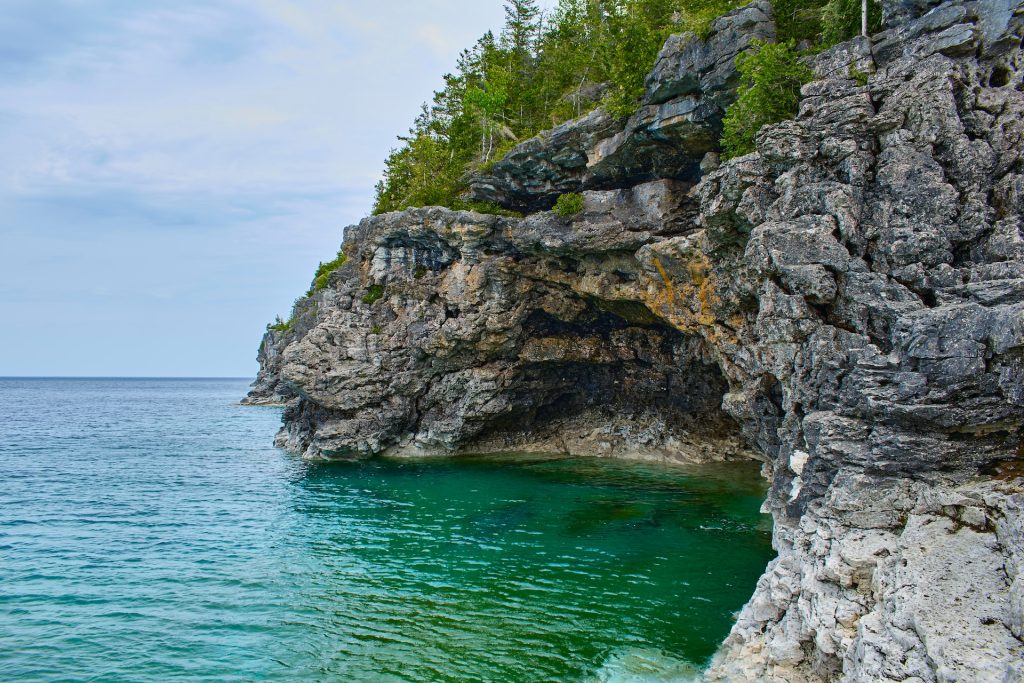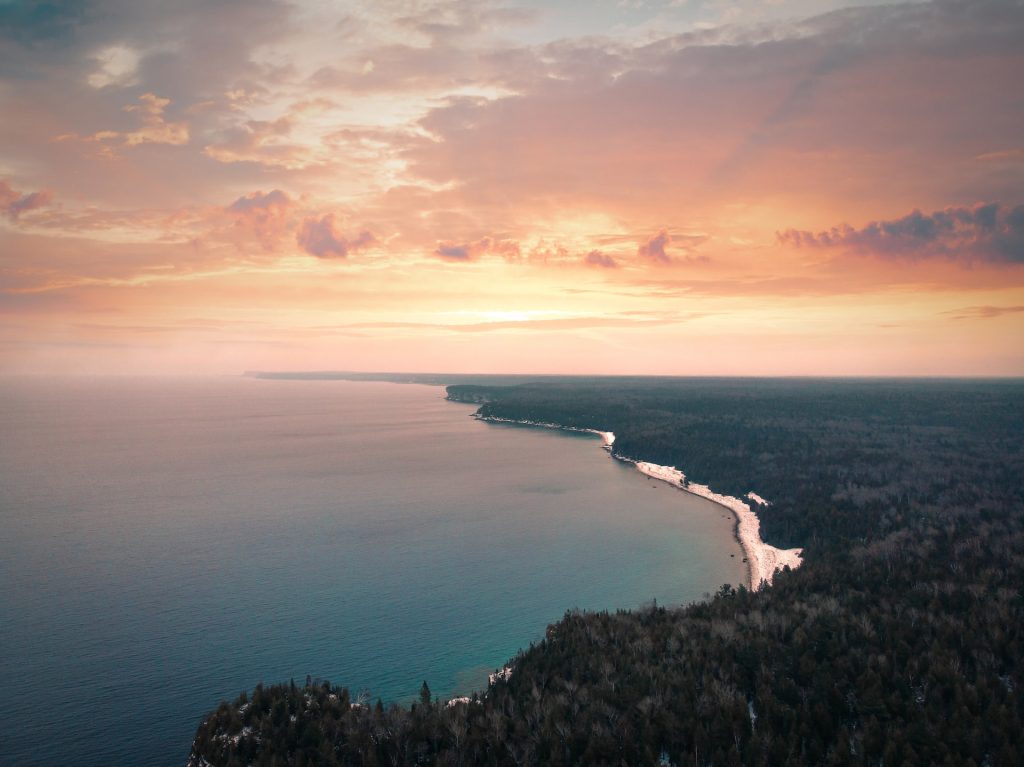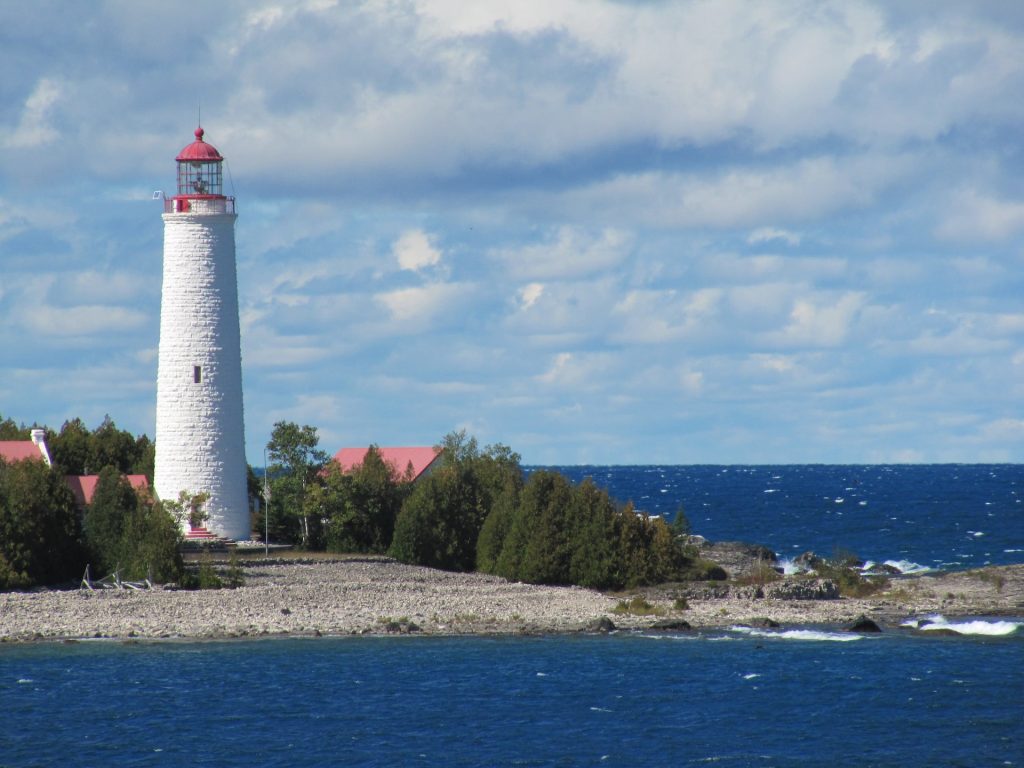Bruce Peninsula National Park is a Canadian treasure, full of natural wonders, cultural treasures, and unique recreational opportunities. Located in the heart of the Niagara Escarpment, this park offers visitors the chance to explore ancient caves, hike along stunning cliff-top trails, and swim in the crystal-clear waters of Georgian Bay.
In this article, we will take a closer look at Bruce Peninsula National Park, exploring its history, natural features, and cultural significance. From the park’s geological wonders to its rich cultural heritage, we will examine what makes Bruce Peninsula National Park such a special place to visit.

Introduction to Bruce Peninsula National Park
The park is located on the northern tip of the Bruce Peninsula, a long, narrow strip of land that juts out into Georgian Bay. The park covers an area of approximately 155 square kilometers, and is home to a variety of unique natural features, including ancient rock formations, pristine forests, and crystal-clear lakes and streams.
Visitors to the park can explore a range of hiking trails, each offering stunning views of the surrounding landscape. From the rocky cliffs of the Niagara Escarpment to the sandy beaches of Georgian Bay, there is something for everyone at Bruce Peninsula National Park.
The park is also home to a rich cultural heritage, with a long history of Indigenous settlement and exploration by European settlers. Today, the park is a popular destination for visitors from around the world, offering the chance to explore one of Canada’s most unique and beautiful natural areas.
History of Bruce Peninsula National Park
The history of Bruce Peninsula National Park dates back thousands of years, to a time when the area was inhabited by Indigenous peoples. The Anishinaabe people were the first to call this area home, and their presence can be traced back to at least 10,000 years ago.
In the centuries that followed, the area was explored by European settlers, who established a number of small communities along the shores of Georgian Bay. These communities relied on fishing and logging for their livelihoods, and many of them remain in the area today.
As the years passed, the area’s natural beauty began to attract more visitors, and in the early 20th century, a number of tourist resorts and cottages were established along the shores of Georgian Bay. These early visitors were drawn to the area’s pristine forests, crystal-clear waters, and stunning natural beauty.
In 1960, the Canadian government established Bruce Peninsula National Park, in order to protect the area’s unique natural features and cultural heritage. Since that time, the park has become one of Canada’s most popular tourist destinations, attracting visitors from around the world who come to explore its stunning landscapes and rich cultural heritage.
Natural Features

One of the main draws of Bruce Peninsula National Park is its stunning natural features, which include ancient rock formations, pristine forests, and crystal-clear lakes and streams. The park is located on the Niagara Escarpment, a long ridge of rock that runs through Ontario and several other US states.
One of the most famous natural features of the park is the Bruce Peninsula Grotto, a stunning cave and swimming hole that is carved out of the ancient rock formations. Visitors to the grotto can swim in the crystal-clear waters, hike along the surrounding trails, or simply take in the breathtaking beauty of this natural wonder.
Another popular natural feature of the park is the shoreline of Georgian Bay, which is home to a number of sandy beaches, rocky cliffs, and crystal-clear waters. Visitors can swim, kayak, or paddle along the shoreline, or simply relax and take in the stunning natural beauty of the area.
The park is also home to a variety of wildlife, including black bears, coyotes, and a wide range of bird species. Visitors can take guided wildlife tours or simply explore the park on their own, taking in the natural beauty and wildlife that call this area home.<h2>Recreational Activities</h2>
In addition to its stunning natural features, Bruce Peninsula National Park offers visitors a wide range of recreational activities, including hiking, camping, canoeing, kayaking, and swimming. With over 100 kilometers of hiking trails, visitors can explore the park’s natural beauty on foot, taking in the stunning vistas and ancient rock formations that make this area so unique.
The park is also home to a number of camping options, including front-country and backcountry sites. Visitors can pitch a tent or rent a yurt, enjoying the peace and tranquility of the park’s natural surroundings.
For those who love water sports, the park offers a wide range of options, including canoeing, kayaking, and swimming in the crystal-clear waters of Georgian Bay. Whether you want to paddle along the shoreline or simply take a dip in the cool waters, there is something for everyone at Bruce Peninsula National Park.
Cultural Significance
In addition to its natural beauty and recreational opportunities, Bruce Peninsula National Park is also rich in cultural significance, with a long history of Indigenous settlement and European exploration. The area has been inhabited by Indigenous peoples for thousands of years, and their presence can be felt throughout the park.
Visitors can explore the area’s rich cultural heritage through a number of interpretive programs and exhibits, which showcase the area’s Indigenous history and European settlement. From the park’s historic lighthouses to its ancient rock carvings, there is something for everyone who wants to learn more about the park’s rich cultural heritage.
Today, the park is also home to a number of cultural events and festivals, which celebrate the area’s unique heritage and offer visitors a chance to experience the culture of the region. From Indigenous powwows to European folk festivals, there is always something happening at Bruce Peninsula National Park.
Challenges Facing Bruce Peninsula National Park
One of the biggest challenges facing Bruce Peninsula National Park is the impact of climate change. Like many other parks around the world, the park is experiencing the effects of rising temperatures, including changes in rainfall patterns and the loss of important habitats.
Another major challenge facing the park is the impact of human activities, including development and recreational activities. As the park becomes more popular with visitors, there is a risk that these activities could have a negative impact on the park’s natural features and wildlife.
In addition to these challenges, the park is also facing a number of logistical issues, including the need to improve infrastructure and facilities in order to meet the needs of visitors and protect the park’s natural features.
The Future of Bruce Peninsula National Park

Despite these challenges, Bruce Peninsula National Park is committed to protecting its natural beauty and cultural heritage, and to ensuring that visitors can continue to enjoy the park for generations to come. The park has developed a number of strategies and plans to address these challenges and plan for the future.
One of the key strategies for the park’s future is a focus on conservation and sustainability. The park is working to protect its natural features and wildlife through a variety of measures, including habitat restoration, monitoring programs, and visitor education.
Another important aspect of the park’s future plans is a focus on improving infrastructure and facilities, in order to better meet the needs of visitors and protect the park’s natural features. This includes improvements to camping facilities, hiking trails, and other amenities, as well as the development of new interpretive programs and exhibits to showcase the park’s unique cultural heritage.
The park is also working to foster partnerships and collaboration with other organizations and stakeholders, in order to ensure that its conservation and sustainability efforts are as effective as possible. By working with local communities, Indigenous peoples, and other organizations, the park can leverage its resources and expertise to achieve its goals and protect this unique natural wonderland
Bruce Peninsula National Park is facing a number of challenges as it looks towards the future, but it is also taking steps to address these challenges and ensure that it remains a unique and special destination for visitors. By focusing on conservation and sustainability, improving infrastructure and facilities, and fostering partnerships and collaboration, the park is well positioned to meet these challenges and continue to offer visitors a chance to explore one of Canada’s most stunning natural areas. As visitors to the park, we can play a role in supporting these efforts, by respecting the park’s natural and cultural treasures and working to protect them for future generations to enjoy.
Frequently asked questions:
What is the best time of year to visit the park?
The best time of year to visit Bruce Peninsula National Park is between late May and early October, when the weather is warm and the park’s facilities and attractions are open to the public.
Are there any entrance fees, passes, or permits required to access the park?
Yes, visitors to the park are required to purchase a Parks Canada Discovery Pass or pay a daily entrance fee. There are also additional fees for camping and other activities within the park.
Are pets allowed within the park’s boundaries?
Yes, pets are allowed within the park’s boundaries, but they must be kept on a leash at all times and are not allowed on beaches or in swimming areas.
What recreational activities are available to visitors at Point the Park?
Visitors to Bruce Peninsula National Park can enjoy a wide range of recreational activities, including hiking, camping, swimming, canoeing, kayaking, and wildlife watching.
What kinds of wildlife can visitors expect to see when exploring the park?
Visitors to the park can expect to see a variety of wildlife, including black bears, coyotes, foxes, beavers, otters, and a wide range of bird species.
Are there camping options available within the park, and what are they?
Yes, there are a number of camping options available within the park, including front-country and backcountry sites, as well as roofed accommodations like yurts and cabins.
Are there any restrictions on fires or barbecues within the park?
Yes, there are restrictions on fires and barbecues within the park, and visitors are required to follow all posted guidelines and regulations. Fires are only allowed in designated areas, and visitors must bring their own firewood or purchase it from the park.
How can visitors reserve a campsite or book an activity within the park?
Visitors can reserve a campsite or book an activity within the park online through the Parks Canada website, or by calling the park directly.
What essentials should visitors bring with them when exploring the Park?
Visitors to the park should bring essentials like water, sunscreen, insect repellent, a first aid kit, appropriate clothing and footwear, and any necessary camping or hiking equipment.
What safety precautions should visitors take while exploring the park?
Visitors to the park should take safety precautions like staying on marked trails, carrying bear spray, securing food and garbage to prevent attracting wildlife, and checking weather forecasts before embarking on outdoor activities.
What are the transportation options available for getting to the Park?
Visitors can reach Bruce Peninsula National Park by car, bus, or train, and there are also a number of shuttle services available in the area.
Is there contact information available for the Park?
Yes, visitors can contact the park by phone, email, or through the Parks Canada website for more information or to make reservations.
What are the park’s hours of operation?
The park is open year-round, but hours of operation for individual facilities and attractions may vary depending on the season. Visitors should check the park’s website for up-to-date information on hours of operation.
